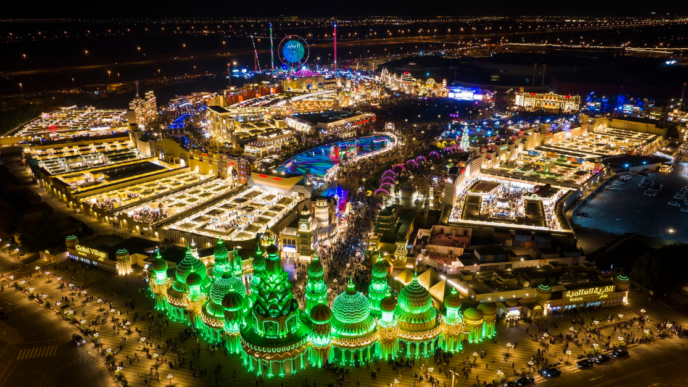The recent surge in gold prices, which began in late 2024, has reached record levels within the first six weeks of 2025. Despite this significant increase, experts believe that demand for gold jewellery will remain strong, driven by central bank purchases, geopolitical instability, and inflation concerns.
Gold Prices on an Upward Trajectory
Leading gold retailers report that higher gold prices have not discouraged jewellery buyers, as sales have remained stable. The enduring appeal of gold as an investment continues to attract buyers, while shifting preferences among younger consumers, particularly millennials and Gen Z, have led to increased interest in diamond and 18k or lower-carat gold jewellery. These buyers are drawn to stylish, modern, and versatile designs.
Shamlal Ahamed, Managing Director for International Operations at Malabar Gold and Diamonds, expects gold prices to maintain their upward trend throughout the year.
“Short-term price movements are difficult to predict due to various economic and social factors. However, historical trends suggest that gold prices tend to rise over time, reinforcing its role as a reliable long-term investment,” Ahamed told BTR.
Gold has always been considered a safe-haven asset, protecting wealth from inflation and economic uncertainties. As demand continues to rise globally, Ahamed believes that its value will remain robust.
The recent rally has seen gold prices soar, reaching approximately $2,950.41 per ounce on February 20, 2025. Analysts predict that prices may surpass $3,200 before stabilizing at higher levels. UBS forecasts continued growth, while Goldman Sachs estimates that gold could surge to $3,300 per ounce by the end of the year, supported by sustained central bank purchases and increased investor interest.
According to Goldman Sachs, structural demand from central banks is expected to drive gold prices up by nine per cent, with additional support from rising ETF investments as interest rates decline. Inflation concerns and fiscal risks are likely to fuel further speculative positioning, while worries over U.S. debt sustainability may encourage central banks to diversify their reserves by acquiring more gold.
Jewellery Demand Unaffected by Price Spikes
While sudden increases in gold prices may initially deter some consumers, this hesitation usually subsides quickly.
“Consumers gradually adapt to new price levels because they recognize gold’s long-term value. Historically, demand for gold jewellery recovers once buyers understand its potential for wealth preservation,” said Ahamed.
Key Factors Supporting Gold’s Strength
John Paul Alukkas, Managing Director at Joyalukkas Group, remains optimistic about gold’s outlook for 2025 following strong performance in 2024.
“Economic uncertainties, inflation, and gold’s status as a safe-haven asset continue to drive demand. Central banks’ persistent buying and improving consumer confidence further bolster gold’s position,” Alukkas told BTR.
Gold holds significant cultural and economic value in regions such as the UAE and India. Joyalukkas plans to manage price fluctuations effectively by offering diverse, high-quality jewellery options.
Alukkas also noted that ongoing economic uncertainties and inflationary pressures would continue attracting investors to gold, reinforcing its importance as a reliable asset for wealth preservation.
Record-Setting Price Levels
Anil Dhanak, Managing Director of Kanz Jewels, emphasized gold’s ability to consistently achieve new record highs. In early 2025, gold prices approached nearly $3,000 per ounce, with further increases expected due to anticipated interest rate cuts and central bank acquisitions.
“Concerns about inflation and geopolitical instability will further enhance gold’s appeal as a safe-haven investment,” said Dhanak.
He identified key influences on gold prices, including Federal Reserve interest rate decisions and geopolitical uncertainties, particularly regarding U.S. trade policies.
“In uncertain economic conditions, investors often choose gold as protection against volatility,” he added.
Growing Popularity of Diamond and Lightweight Jewellery
ewellery retailers have observed an increased preference for diamond jewellery and lower-carat gold, driven partly by rising gold prices and partly by changing fashion trends.
Ahamed noted growing interest among younger consumers in trendy, lightweight jewellery designs.
“This trend is not solely due to gold price fluctuations. Consumers remain focused on design and fashion, as evidenced by stable average transaction values for gold jewellery,” Ahamed explained.
John Paul Alukkas also recognized this shift, observing customers increasingly opting for diamond jewellery and 18k gold or lower carats.
“Customers now prefer affordable options suited for daily wear. Joyalukkas provides diverse selections, catering to those looking for stunning diamonds and premium gold designs alike,” Alukkas remarked.
Gold’s Long-Term Appeal
Gold significantly appreciated in 2024, gaining over 25% and achieving record-high prices. Over the past five years, gold’s value rose by more than 70%, confirming its position as a valuable investment.
Traditionally, high gold prices reduced jewellery demand, but consumer behavior has changed.
“Today, consumers understand that waiting for prices to decline isn’t always practical. Instead, they make purchases based on their financial situations,” explained Dhanak.
Demand for lighter, stylish jewellery remains resilient, maintaining steady sales despite higher prices.
“Consumers prioritize design aesthetics. Diamonds and lower-carat gold offer affordable alternatives when gold prices are high, striking a balance between cost and style,” he added.
Continued Demand for Gold as a Safe-Haven
Despite the price surge, gold maintains its status as a safe investment. Dhanak highlighted that gold’s recent rally reinforces its role as a stable asset.
“Unless there’s a major shift in interest rates or significant economic recovery, gold will remain a preferred investment choice,” he concluded.
Gold continues to provide security against inflation and economic uncertainty, ensuring its ongoing importance in global investment portfolios.







